
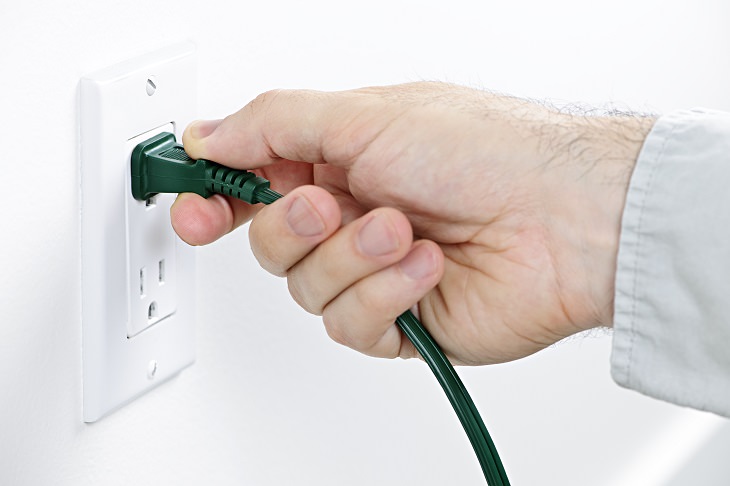
Energy vampires are those plugged-in devices that use electricity even when they’re turned off or not being used. This standby power is what keeps the clock ticking on your cable box, your Amazon Echo waiting for its next “Alexa” command, and your TV’s settings in place. While this is obviously convenient, it can cost the average US household $100 per year. You can eradicate these phantom loads simply by unplugging your devices.
2. Get Smart about Your Thermostat
Smart thermostats can help to decrease your energy bills by automatically adjusting heating and cooling settings within a range of comfortable temperatures. Some, such as the ecobee4, can also adjust your home’s temperature based on whichever rooms are currently occupied. The average smart thermostat will save you $180 per year on your energy bills and will analyze your energy usage with monthly breakdowns.
3. Switch to Energy-Efficient LED Lighting
Did you know that LED light bulbs can use 90% less energy than standard ones? Yes, they cost more than ordinary bulbs, but in addition to saving you money on future electric bills, they last around 15 times longer, meaning you won’t have to keep spending money replacing them. For example, Philips LED bulbs have an average lifespan of 25,000 hours. This means that if you keep one on for three hours each day, you won’t have to buy a new one for nearly two decades.

To conserve energy while cleaning your clothes. You should wait until you have a full load in the washer and run it using lower temperature settings. Whenever possible, air dry your clothes instead of using the dryer, but if you do use the dryer, be sure to clean the lint trap before starting. Every now and then, remove the vent duct that connects the back of your dryer to the outside of the house and clean that too.
5. Avoid the Oven
When your air conditioning is working to keep your house cool, you should avoid using appliances that radiate excess heat. Therefore, you should opt to cook with the microwave or stove top when possible. Or bet yet, fire up the grill and cook outside.
6. Turn off the Lights
Lighting your home accounts for around 20% of your electric bill, or an average of $200 per year. If you’re guilty of always leaving the lights on, try a smart light switch such as ecobee Switch+ that will automatically turn off your lights a few minutes after you leave the room. You can also use them to turn on your lights, so you don’t have to come home to a dark house.
7. Upgrade Your Shades
When picking window shades for your house, you should consider insulated cellular shades, which can increase energy savings by making your windows more efficient. The Department of Energy reports that these single-cell shades can decrease heat loss in the winter by 40% and prevent unwanted solar hear in the summer by up to 80%. Even better, these shades can be automated, meaning that they can be programmed to rise at certain times of the day to support your energy savings.

The average household spends $400 to $600 on water heating every year; approximately 18% of your utility bills. An easy way to cut back on your hot water usage is to take shorter showers or install a smart shower head to monitor your water usage and temperature.
9. Make Your Windows More Efficient
If you have money to spare, replacing old windows with energy efficient ones is a worthwhile investment as they also add value to your home. A lower-cost option is to install window film that blocks out the summer sun’s heat reducing demand on your cooling system, and helps to keep warm air from escaping during the winter.
10. Change Your Furnace Filter
A dirty or clogged furnace filter can create a lot of pressure on its motors, making your furnace work a lot harder. The harder your furnace is working, the more energy it uses, so start replacing the filter on a regular schedule.
Source: rd
Images: depositphotos

Do You Have Arthritis? These Tips Can Help Ease the Pain
Though you can’t always prevent arthritis, there are some things that you can do to help reduce your symptoms if you have it. Here are 8 of them!

Save Money with These 15 Great Fuel Economy Tips
These 15 great tips will help improve your fuel economy, saving you money in the process.
 9:36
9:36
10 of the Best Ways to Hide Money When Traveling!
In this video, you’ll see ten great ways to hide your money for that extra peace of mind.

8 Shopping Tricks That Will Save You Money
Learn to save more money with these secret tips.
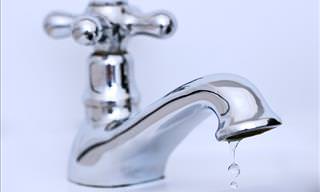
8 Ways Your Home is Sneakily Draining Your Bank Account
Since your house cannot talk to you, here are some tips that will reveal the hidden ways in which your house could be costing you more money than it should.

If You Suffer from Back Pain, You Must Read This...
If you have back pain, the following information is like a gift from God. This is how you can relieve back pain effectively.

The 7 Biggest Mistakes People Make With Their Wills
Make sure your heirs get what you want them to get by not making these mistakes.

How to Choose, Cook and Prepare a Perfect Steak!
Most of us want to know how to cook the perfect steak, and now, thanks to these fantastic guides, we can!

For Beautiful Hair and Skin, Neem Tree Oil Is All You Need
This natural remedy is all you need in your medicine cabinet for great hair and skin.

19 Tips That'll Have Your Home Sparkling in Minutes
Not only will these 19 cleaning hacks make your life easier, they will also save you money. There's no excuse not to have your home sparkling.

This Guy Found a Tip Book from the 60s, And It's Genius!
It turns out lifehacks aren't only a thing of the present, the 60's had their own book of tips and tricks to make life easier, and here are 8 of the best!
 5:17
5:17
These Potatoes Will Definitely Make Your Dish Stand Out
Every great dish needs a great side dish to complement it. These Baked-twice potatoes are such a side dish.

Say Goodbye to Pesky Weeds With This Easy-to-Make Spray!
If you have pesky weeds in your garden or growing on your patio, use these two household ingredients to get rid of them!

These Nifty Visual Guides Can Come in Handy For All of Us
Here are some really useful guides with some great life hacks and tips and tricks that can come in handy to anyone.

7 Scented Flowers for a Sweet Smelling Home
Opt for these beautifully scented flowers as opposed to air fresheners or candles for a better smelling home.

Learn 9 Mental Techniques to Battle Pain
Discover how to reduce your pain using the power of thought and naturally – it really works!

These Items Should Never, Ever Be Stored In a Garage...
We often overlook how to store items correctly, and many of these items usually end up in our garage. Here are 9 items you should never store in your garage.

Cornstarch Has More Uses Than You Could Ever Think Of
We never usually think of cornstarch in terms of its ability to clean, but it's actually incredibly versatile and can be used in many different ways at home.
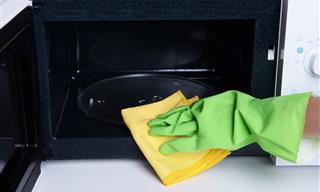
12 Ways to Remove Odors from a Microwave
If your microwave has lingering smells despite regular cleaning, here are 12 DIY solutions to neutralize those odors effectively.
 9:53
9:53
Cooking Tips - The Truth About Cast Iron Pans
Contrary to popular belief, cast iron pans are extremely versatile and useful. Find out how to get the most out of your cast-iron skillet in this video.
 1:37
1:37
What 1939 Thought of Fashion Today!
hilarious short video from 1939 that dares to dream about the year of 2000 AD....

10 Great Extra Uses for Charcoal Briquettes
Here's how you can put those extra charcoal briquettes to good use at home.

Waste No More: 6 Great Ways to Use Fruit & Veggie Peels
If you want to save both money and reduce your waste, remember these 6 practical and delicious ideas for what you can do to utilize your fruit and vegetable leftovers to the max.

A Comprehensive Guide to Growing Your Own Veggies!
There's nothing like starting the day with a fresh vegetable garden, and now you can do so every day with this ultimate veggie growing guide.

10 Grocery Items That Drain Your Wallet
You could be wasting a lot of money at the grocery store!
 22:36
22:36
These Innocuous Car Items Conceal Surprising Dangers
If you're a car owner, this video will be really helpful to you.

No More Clutter: Garage Organization Made Easy
15 smart ways how you can turn your garage into the most well-organized area in your home

Stop Your Pipes From Freezing with This Simple Hack
Don't let your pipes freeze this winter! Here's how to go about it.

These Are The Financial Secrets of This Billionaire
When it comes to making money, you have to listen to men like Warren Buffet - they really know what they are talking about.
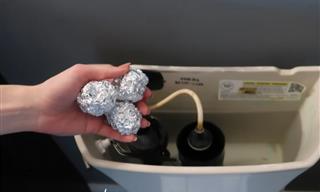 8:08
8:08
Home Tip: Why I Put Aluminum Foil in My Toilet
In today's video, we're diving into one of those quirky life hacks that might just change the way you approach household maintenance.

Think its Healthy? These Foods Are Ultra-Processed
These foods are more processed than you think.

Not Only Light: 11 Great Uses for Wax Candles
With the following 11 useful tips, you can use candles in new and innovative ways to help you around the house!

Decanting 101: Tips to Simplify and Organize Your Space
Read on to discover how decanting can help you organize your living space.

If You Have a Dog, Here Are 10 Signs It's Stressed Out
Like us humans, dogs can get stressed as well. If you have a dog, here are 10 common signs that it might be stressed.
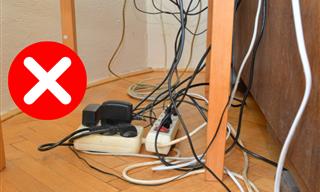
11 Extension Cord Mistakes That Could Put You in Danger
Knowing how to handle extension cords correctly can help prevent fires, electrical shocks, and other risks.

16 Simple Paper Craft Tutorials You Can Make Right Now!
Feeling creative? The 16 paper craft tutorials are detailed and easy to follow, so get out your scissors and give them a go!

10 Tips for Organizing Your Fridge That’ll Save Time & Money
A tidy fridge will save you both time and money. Follow our 10 tips to organize your fridge and see the difference it makes to your life.

Cut These 8 Expenses After Retirement to Save Money
Make sure you avoid spending on these things during your retirement years.

11 Ways You May Be Messing up Your Garden
Many aspiring gardeners give up on their dream, solely because they lack information about their garden. Here are 11 common gardening mistakes that we make.
 18:29
18:29
6 Simple and Important Flexibility Exercises for Seniors
Regain flexibility after 60 with these easy exercises.

Fold Your Clothes the Right Way with This Guide
Have you been folding your clothes wrong all this time? These top 10 tips will help keep your clothes organized.

5 Terrific Ways to Use Carrot Oil to Treat Hair and Skin
Carrot oil has many other uses that can actually benefit your body much more.

How to Defuse Heated Arguments Before it Gets Even Worse
Having an argument is natural, but sometimes they just spiral out of control causing a lot of damage. Here's how you can prevent that from happening.

Dog Behavior 101: How Dogs Show They’re Upset
Your dog may be mad at you and may not even know it!

Keep the Flu Out of Your Home with these 8 Tips
Did you know that if somebody in the family comes down with the flu, all it takes is a couple of hours for the virus to spread? This room-by-room guide will help stop germs in their tracks, keeping everyone at home healthy and flu-free.

Experts Advise to Leave These Words Out of Your Vocabulary
Some very common words we say automatically might be making us look bad, experts say. These are the 5 words you should leave out your next conversation.

12 Things Every Cat Owner Should Be Aware Of and Care Tips
Cat care may not seem terribly complicated, but there are some important moments that even experienced cat owners miss...

Kitchen Tips: How Long You Can Keep Leftovers?
It’s crucial to know how long different leftover foods can last in your fridge, and when it’s time to part ways with them for your own safety and health
To enable your Ad-Free Subscription, please fill the fields below
Your subscription was successful, now you can enjoy an ad-free experience!!
Note: To make sure you get no ads, please make sure to log in to your account. If you are logged in already, then refresh the page. The subscription can be cancelled at any time.


